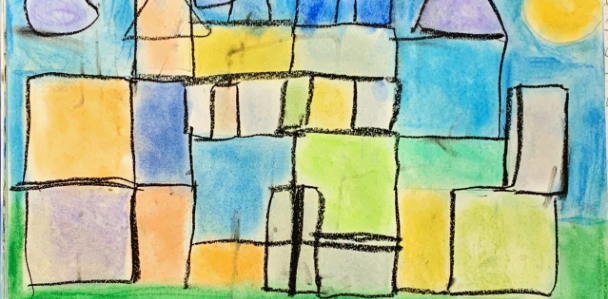Art and Design
Art and Design Lead - Mrs E McClellan
At Rossington St Michael’s, we believe art, craft and design embody some of the highest forms of human creativity. Our high-quality art and design education engages, inspires and challenges pupils, equipping them with the knowledge and skills to experiment, invent and create their own works of art, craft and design. Through school, our pupils are able to think critically and develop a more rigorous understanding of art and design. They know how art and design both reflect and shape our history, and contribute to the culture, creativity and wealth of our nation. We ensure that all pupils produce creative work, exploring their ideas and recording their experiences. We support our children to become proficient in drawing, painting, sculpture and other art, craft and design techniques. Our children are able to evaluate and analyse creative works using the language of art and design. We ensure that they know about great artists, craft makers and designers, and understand the historical and cultural development of their art forms.
To find out more about our rationale and intent, please click below:
ART & DESIGN SUBJECT RATIONALE
"Art, craft and design embody some of the highest forms of human creativity. A high-quality art and design education should engage, inspire and challenge pupils, equipping them with the knowledge and skills to experiment invent and create their own works of art, craft and design." - DfE Purpose of Study
At St Michael’s, we know that Art holds an important place within the primary curriculum. We believe it helps to balance the weight of academia and creativity, helping to support the development of the whole child. We see the arts as an essential part of life, especially in the younger years when children can be shaped and defined by them, and helping them to understand themselves and the world around them. Our children's experience of primary school is enriched and enlivened by the arts.
Our Art and Design Curriculum:
We follow the National Curriculum for Art and Design.
ART AND DESIGN PROGRAMMES OF STUDY: KEY STAGES 1 AND 2
Aims and ambitions for Art and Design:
Our aim is for all pupils to:
-
Produce creative work, exploring their ideas and recording their experiences
-
Become proficient in drawing, painting, sculpture and other art, craft and design techniques
-
Evaluate and analyse creative works using the language of art, craft and design
-
Know about great artists, craft makers and designers, and understand the historical and cultural development of their art forms.
What do we expect our children to learn in Art by the end of each key stage?
In Early Years:
-
Draw with increasing complexity and detail, such as representing a face with a circle and including details
-
Show different emotions in their drawings and paintings, like happiness, sadness, fear, etc. Explore colour and colour mixing. Show different emotions in their drawings – happiness, sadness, fear, etc.
-
Explore, use and refine a variety of artistic effects to express their ideas and feelings
-
Return to and build on their previous learning, refining ideas and developing their ability to represent them
-
Create collaboratively, sharing ideas, resources and skills.
Key Stage 1:
-
To use a range of materials creatively to design and make products
-
To use drawing, painting and sculpture to develop and share their ideas, experiences and imagination
-
To develop a wide range of art and design techniques in using colour, pattern, texture, line, shape, form and space
-
About the work of a range of artists, craft makers and designers, describing the differences and similarities between different practices and disciplines, and making links to their own work.
Key Stage 2:
-
To develop their techniques, including their control and their use of materials, with creativity, experimentation and an increasing awareness of different kinds of art, craft and design
-
To create sketch books to record their observations and use them to review and revisit ideas
-
To improve their mastery of art and design techniques, including drawing, painting and sculpture with a range of materials [for example, pencil, charcoal, paint, clay]
-
About great artists, architects and designers in history.
Knowledge in Art and Design
Knowledge is broken down into two main types:
-
Substantive knowledge: knowing about the technical and wider elements of Art and Design, including knowledge of famous artists and their styles.
-
Disciplinary knowledge: knowing how to apply this knowledge in practice to control techniques and create art through different mediums.
Further information about the substantive and disciplinary knowledge that we teach at Rossington St Michael’s can be seen below on the Progression document.
How have we designed our curriculum?
We have crafted, designed and structured our own curriculum to allow children to made good progress throughout their primary education. Our curriculum suits the progressive needs of our school, which sets out the aims and programmes of study for Art ensuring that our curriculum coverage is consistent across key stages, whilst also ensuring that disciplinary knowledge is built upon each year. Teachers are able to support pupils in developing their own knowledge and understanding about Art, resulting in them being able to make appropriate links to learning within the community and throughout their lives.
Curriculum Overview
Examples of Unit Planning
Autumn Term Year 5 Exploring Form Through Drawing
Autumn Term Year 2 Stick Transformation
Autumn Term Year 6 Typography and Maps
Spring Term Y4 Exploring Still Life
Spring Term Year 1 Simple Printmaking
Spring Term Year 2 Explore and Draw
Spring Term Year 3 Paint Cloth Thread
Summer Term Year 2 Expressive Painting
Summer Term Year 3 Shape and Colour
Summer Term Year 1 Exploring Watercolour
Summer Term Year3 Shape and Colour




